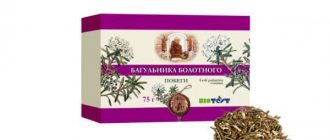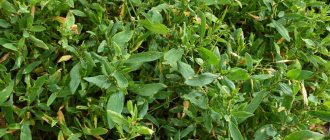In eastern countries, Sophora japonica is highly valued . This is a fairly tall tree with a lush crown with yellow inflorescences. This tree symbolizes beauty and human health.
Quite often the plant was used for decorative purposes, for example, planted in Buddhist temples. They called this plant in a special way - “tree of Chinese scientists.”
The inflorescences inspired creative people to create majestic creations. In addition, healers noted the beneficial effects of sophora on a person’s well-being and health. After all, with its help you can overcome many ailments. After a fairly short period of time, Sophora began to be compared with ginseng. Healers recognized it as a cure for all ailments.
Sophora japonica plant
In ancient China, incredible medicinal possibilities of this plant were discovered. It was a “crying tree” at that time. It received this name because of its crown and its features. It was this that was used to decorate the Buddhist temple.
It was believed that Japanese Sophora had miraculous powers. It was even credited with a mystical effect, because all eastern peoples worshiped this tree. They sincerely believed in the ability to cure almost any ailment and clear negative thoughts. Therefore, many people sought to take advantage of this useful plant.
Beginning in 1747, it began to be bred for decorative purposes. Then the tree was brought to Yalta. It adapted perfectly to the conditions, soon grew up quite quickly, and became popular throughout the Crimean region.
The height is approximately 30 m. This is a frost-resistant plant that easily tolerates drought and fairly large gusts of wind. In its wild form, the tree grows in the Caucasus. In Asian countries you can see the tree, as well as in Crimea.
The fruits and buds are used to prepare medicines. When autumn comes, you can begin collecting them. This procedure is carried out exclusively in dry weather. It is necessary to use a place for drying naturally that will be reliably protected from sunlight. Thanks to such storage conditions, valuable fruits can be saved. You can store such preparations for two years, using them for health improvement and traditional healing.
Compound
The tree has a beneficial effect on the human body and its health due to the characteristics of its chemical component. The necessary raw materials are obtained from the fruits and buds of the tree. Equally, folk and traditional medicine uses the tree for medicinal purposes. A lot of research has been carried out on this topic and the following has been revealed:
- The composition contains alkaloids . This is matrine, for example, pachycarpine. They are better known as poisonous compounds. Interestingly, in small quantities the element is considered an effective medicine. It is able to calm a person and put him to sleep, because it has the effect of a mild sleeping pill. Its presence helps relieve pain and inflammation.
- Also contains flavonoids in an amount of 30% . These glucose compounds are known for their cardiotonic, sedative effect. His presence can relieve spasms. It should also be noted that rutin produces a rejuvenating effect and promotes the accelerated process of regeneration of capillary walls. Its presence contributes to the normalization of metabolic processes. The quercetin content helps reduce blood pressure to an optimal level; the element has an antioxidant effect.
- Contains a group of substances called glycosides . Due to their intake, elasticity and endurance during the functional work of the heart muscle increase.
- Ascorbic acid helps strengthen the walls of blood vessels and increase blood clotting . This remedy can enhance the protective function of the immune system.
- Contains organic acids. They operate in a complex manner. Such acids can relieve a person from inflammation and pain. Their presence kills pathogenic bacteria, fungi, and viruses. Thanks to them, the regeneration of a certain surface of the skin is accelerated.
Note! It is known that Japanese Sophora has a fairly rich composition. It contains important macroelements and microcomponents. Considering the chemical component, it should be noted the presence of a number of useful elements. This is potassium, calcium. You can supplement the list with magnesium and iodine.
Liptin of low density is present in the leaves. The seeds of the healing medicine contain linoleic acid.
Positive Impact
Sophora is often used as a universal cure for all ailments. After all, many diseases are treated on its basis. It is worth considering in more detail the following beneficial properties of Japanese Sophora:
- Thanks to its intake, blood pressure returns to normal. As a result, the walls of the blood vessels relax. This beneficial effect is explained by the presence of alkaloids in the composition;
- There is an acceleration in the dissolution of cholesterol plaques, as well as intravascular blood clots. Certain elements of wood are responsible for strengthening capillaries. They are able to thin the blood and minimize the load on the heart muscle;
- neutralize free radicals. After all, the plant is known for its antioxidant effect;
- based on a medicinal plant, the inflammatory process is relieved, thus removing phlegm. It is worth noting the antibacterial, antiviral effect of natural medicine;
- regeneration, repair of damaged skin areas. The plant is able to heal wounds in a fairly short period of time. Cells are restored, metabolic processes are regulated. In the presence of allergic reactions, Sophora is able to relieve their main symptomatic signs;
- in the presence of swelling, Sophora japonica can eliminate it. Urine output also returns to normal. These beneficial effects can be explained by mild stimulation of the working capacity of the adrenal cortex;
- The functional abilities of the body's defenses are strengthened with its use.
A little history
The medicinal properties of Sophora japonica have been known since ancient times, although the first use of the plant's flowers was as a dye. Then the tree was called “crying” and was planted next to temples. It was believed that the tree not only helps in treating ailments, but also can read a person’s thoughts and help make the right decision.
Eastern peoples worshiped the “weeping tree.” The Chinese were confident that fragrant flowers could prevent strokes, and were among the first to use preparations based on parts of the plant as an anti-inflammatory and analgesic.
In 1747, Far Eastern botanist breeders began cultural breeding of the plant, mainly as an ornamental one. Already at the beginning of the 19th century, styphnolobia was brought to the Nikitsky Botanical Garden, located near Yalta, where the tree took root well and subsequently spread throughout the entire Crimean peninsula, as well as throughout Ukraine (Kherson and Odessa regions). The plant has taken root well in the Krasnodar Territory, the Amur Region, Primorye, Sakhalin, Transcaucasia, Altai and the Caucasus.
It is an excellent honey plant and decorates botanical gardens and cultural plantings in parks and squares. Sophora japonica preparations have found application in medicine and are effective for various, including the most serious, diseases.
Indications
A medicine made from this plant can truly be a salvation. Experts identify a number of ailments that can be overcome with the help of sophora.
Diagnosis of cardiovascular diseases
Due to its rutin content, the plant is used to treat heart disease or joint dysfunction. Its presence affects the process of cholesterol removal. Thanks to it, atherosclerotic plaques and blood clots do not form. The plant is able to strengthen the walls of blood vessels and normalize the blood circulation process.
Experts also observe a decrease in capillary permeability after taking the medicine. This promotes the active use of Sophora to combat angina pectoris and atherosclerosis. It is used to quickly get rid of varicose veins and vasculitis. Rutin is an ideal component for carrying out preventive safety measures, minimizing the occurrence of a stroke or internal bleeding in the future.
Gynecological diseases
The plant is able to relieve the inflammatory process, destroy bacteria, and minimize the risk of tumors. Due to its high-quality composition, Sophora is prescribed to relieve inflammation in the uterus and fallopian tubes. Using the plant can stop bleeding.
In general, the reproductive system normalizes its performance. It also helps during menopause, when a woman suffers from unpleasant symptomatic signs. With the help of the plant, unpleasant manifestations are stopped, the woman’s hormonal levels are normalized.
Diagnosis of malignant neoplasms
For malignant neoplasms, this effective natural medicine should be used. It is known that taking it helps stop the growth of pathogenic cells. The components that are included in the high-quality composition of the plant prevent the active progression of the disease. The plant is often used in combination with other medicines, which generally produces a positive effect on the patient’s health.
When diagnosing a malignant neoplasm in the final stages, it is necessary to take this plant. After all, it can relieve inflammation and excessive swelling. In case of exacerbations or during rehabilitation, it is important to support the immune system. Sophora is able to maintain it at the required level.
Diabetes
Another indication is diabetes mellitus. When using the plant, it is necessary to remember the effect on the functioning of the thyroid and pancreas. A number of studies have shown that sophora has hypoglycemic properties. This means that this plant can be used at different stages of the disease.
Pathological changes in the gastrointestinal tract
For pathological changes in the gastrointestinal tract, a natural plant is also used. It can relieve inflammation and stimulate the regeneration process of injured mucosal surfaces. The plant is used in the treatment of giardiasis or helminthiasis.
Diagnosis of kidney and liver disease
During the diagnosis of kidney and liver disease, Sophora is used. After all, it contains quercetin, which is known for its detoxifying effect. This component is able to cleanse the liver and blood of allergens and toxic elements. Doctors also recommend using this remedy after a sufficiently long course of treatment.
Those tinctures that are made on the basis of Sophora are taken orally, used for external or local use. An effective medicine for irrigating the throat, rinsing the gums and mouth.
The tincture is used to relieve unpleasant pain from rheumatism or to get rid of swelling. For this purpose, tinctures and compresses are used.
A decoction based on this plant is also considered an effective remedy. It helps in the fight against skin diseases. It is used for frostbite or burns.
Collection and storage
There are many traditional medicine recipes and medicines that are made on the basis of Japanese Sophora. It is recommended to purchase the finished medicine at a pharmacy at the best price. You can also prepare healing medicine yourself.
To do this, it is necessary to collect unripe fruits, buds that have not blossomed. They have the greatest value. The collection of these parts occurs exclusively in dry weather. At the beginning of the summer season, it is necessary to start collecting fruits. Then they need to be tied up, left in the shade, in a dry place for 2 hours. The fruits should have a green tint.
At low temperatures, the plant loses its beneficial properties.
Japanese Sophora: tincture
Most often, tincture is used for medicinal purposes. Alcohol, which is a component of the tincture, increases the beneficial effect.
In its finished form, the tincture is used to combat internal bleeding and manifestations of diabetes. In addition, alcohol tincture is used in the course of treatment for hypertensive symptoms and angina pectoris.
Externally, you can treat the burn or injured skin using the product. Medicine is also used for stomatitis or periodontal disease.
For home preparation you will need 56% alcohol and fresh fruits of the plant. Stick to equal proportions. It is necessary to infuse the tincture for three weeks, then filter.
Certain recommendations should be followed when taking the medicine. To a large extent, the dosage depends on the specific disease:
- if the functional functioning of the gastrointestinal tract is disrupted, you need to drink 30 drops about three times a day. In general, the course of treatment using the tincture is approximately 4 weeks. After this, you should definitely take a break for 10 days. If necessary, the course can be repeated;
- when diagnosing a patient with cardiovascular diseases, it is necessary to take 5 teaspoons three times a day. Regular use of the medication should not exceed a month;
- As a preventative measure to minimize the occurrence of a stroke or heart attack, you should take 3 teaspoons of the drug daily. It is necessary to drink the tincture after eating. If necessary, the course should be repeated. Several repetitions per year are acceptable;
- In order to stop inflammation in the oral cavity at an early stage, a tincture, previously diluted with clean water, is used. The components should be mixed in equal quantities. The prepared infusion is used for rinsing;
- If you have skin diseases, you must take the tincture internally. The course lasts approximately a month. It is necessary, together with internal treatment, to use compresses externally on the affected areas of the skin;
- when diagnosing gynecological diseases, the medicine should be used for 21 days. The optimal amount is approximately 15 drops. This course can be repeated 2-3 times a year.
Using mistletoe at home
What are the uses of mistletoe in folk medicine? What medicines can you prepare yourself? What medicines can be purchased at a herbal pharmacy?
Herbal remedies
In modern pharmacology, the medicinal properties and chemical composition of this plant are actively studied. In particular, scientific interest in mistletoe is caused by its antitumor, soothing, and anti-sclerotic effects.
Infusion and decoction
Decoctions and infusions can be used internally and externally. For external use, it is permissible to increase the dose of dry raw materials.
Cold brew recipe
- Take 2 tsp. dry raw materials.
- Pour a glass of cold water.
- Leave for 12 hours.
- Strain.
Take 1 tbsp. l. 2-3 per day after meals. Increasing the dosage may lead to side effects from the nervous and digestive systems. If nausea, vomiting, or dizziness occur, you should stop taking the drug and seek medical help.
Decoction recipe
- Pour ¼ liter of boiling water over a dessert spoon of raw materials.
- Bring to a boil.
- Leave for 30 minutes.
- Strain.
More about mistletoe for weight loss
The herb can have a diuretic, cleansing effect on the entire body as a whole. In addition, the plant normalizes metabolism and the functioning of the endocrine system. Mistletoe (taken from willow) is often chosen for weight loss. You may encounter skepticism about the benefits of herbs for weight loss. The recipe for mistletoe and linden for weight loss is especially popular in Internet sources, in which you allegedly lose 5 kg of weight in 4 days. Decoctions of mistletoe and linden are taken according to a certain scheme in large volumes. Should I believe him or not? Doctors warn against this “miracle recipe.” You shouldn't experiment with your health. Linden cannot cause much harm to the body, but large amounts of mistletoe can cause serious side effects.
Tincture
Prescribed for all of the above-mentioned diagnoses. It is especially useful to drink for functional nervous disorders, women's diseases, during the rehabilitation period after a serious illness, to strengthen the immune system. The drug stops bleeding, normalizes blood pressure and heart function. The tincture can be used to make rubs for joint diseases. It is also an effective pain reliever.
- Take 50 g of dry raw materials.
- Pour in ½ liter of vodka or 40% alcohol.
- Leave for 30 days in a dark place.
- Strain.
Take 3-4 times a day, 30-40 drops.
Tincture of Japanese Sophora and White Mistletoe
This drug can be purchased at a pharmacy or prepared independently. What are the main indications for its use?
- Vascular diseases (atherosclerosis, varicose veins, thrombophlebitis).
- Autoimmune diseases.
- Nervous disorders.
- Hypertension.
- Uterine fibroids, mastopathy, ovarian inflammation.
- Prostatitis, adenoma.
- Psoriasis, eczema, fungal skin lesions.
- Stroke.
- Colitis, diarrhea, dysentery, hemorrhoids, stomach ulcers.
- Malignant tumors.
- Strengthening the immune system.
How to make a homemade tincture of Japanese sophora and white mistletoe? First you need to prepare a separate tincture of sophora and mistletoe, then mix them.
Preparation of Sophora japonica tincture
- Take 100 g of dry raw materials.
- Pour in ½ liter of vodka.
- Leave for 30 days.
Read more about it in our other article.
Preparation of mistletoe tincture
- Take 250 g of dry raw materials.
- Pour in ½ liter of vodka.
- Leave for 30 days.
After 30 days, the tinctures are poured into one container and infused for another 7 days, after which they must be filtered.
What are the features of the reception?
- Start dosage with a small dose.
- Then drink 1 teaspoon, and after some time the dose is increased to 1 dessert spoon.
- Can be taken 3-4 times a day.
- The product must be diluted in water.
- Drink 30 minutes before meals.
- The course can last up to six months.
The main uses of mistletoe are functional nervous disorders, diseases of blood vessels and joints, skin lesions, bleeding, and women's diseases. The antitumor effect of the herb has been scientifically proven. It is included in the complex therapy of oncological diseases. It is also a strong tonic with an analgesic and hypotensive effect.
Thank you
Sophora
is one of the most popular medicinal plants, recognized not only by folk medicine, but also by official medicine. And this is quite natural, given the composition of this plant. Substances such as rutin, pachycarpine, glycosides, micro- and macroelements are widely used in the treatment of gynecological and oncological diseases, stroke and diabetes, psoriasis, pancreatitis and varicose veins. We’ll talk further about how to properly take Sophora preparations for the listed diseases. In addition, we will consider the compatibility of Sophora with other medicinal plants.
Japanese Sophora: decoction
This medicine is famous for its beneficial effects on the patient’s body. Sophora helps relieve symptomatic signs of a cold.
The plant in the form of a decoction is used to strengthen hair, minimize hair loss, and loss of a vibrant, healthy appearance.
It is necessary to pour 1 tbsp. l. fruits (they must first be crushed), 0.15 liters of boiled water. Then cook the broth for 10 minutes. Next, add boiled water and let the liquid cool. This decoction can be used as a rinse approximately 2-3 times a week.
For a course of therapy aimed at combating tuberculosis, malaria or jaundice, it is necessary to use a decoction of the roots of the tree. To prepare a healing medicine, you need to take 1 tablespoon of the dry Sophora ingredient. Fill them with 0.25 liters of boiled water. Put it on fire. After boiling for 10 minutes, cool and strain the solution.
To achieve the desired effect, you need to take the medicine 5 teaspoons three times a day.
Morphological description
The tree can reach a height of up to 25 meters (in the middle zone - 10-15 meters), has a wide spherical spreading crown. The top of the trunk is covered with bark, which over time becomes dark gray and becomes covered with cracks. Young branches are thornless and green.
The leaves are odd-pinnate, 11-25 cm long. The leaves, of which there are from 19 to 17 pieces per branch, are oblong-ovate, 2-5 cm long. They fall off in the winter.
It blooms for the first time 30 years after the start of growth. The flowers are yellowish-white in color, collected in loose panicles that reach a length of up to 35 cm. They emit a very pleasant aroma. The tree blooms once every 2 years, flowering occurs in July-August.
The fruit is a juicy, indehiscent cylindrical bean with distinct thickenings. At first the beans are greenish-brown, and when ripe they become reddish, 3-8 cm long. They ripen in September-October, do not fall off and stay on the tree all winter.
Externally, Sophora is similar to acacia, and they are sometimes even confused. However, the plant's characteristic fruits make it easy to identify.
Combination of drugs
The medicine can be combined with other plants. One of them is mistletoe. It can save a person from neoplasms and has an atherosclerotic effect. The plant restores blood flow and strengthens the immune system. This plant is used in European countries as an effective aid in the fight against cancer. All thanks to its high-quality composition. It contains tannins and saponin-containing substances. The list can be supplemented by the presence of a number of alkaloids, fatty acids, as well as cetyl alcohol.
The combination of two plants is considered an excellent combination. A tincture made from them helps get rid of cancer diseases, atherosclerosis, and hypertension. If the functional functioning of the liver, kidneys or gastrointestinal tract is impaired, the drug is also actively used.
Quite often, traditional healers use this tincture for medicinal purposes. After all, the product helps fight diabetes, skin diseases, and relieves a person from periodontal disease.
Alternative medicine often uses a combination of these plants after a stroke, as well as during chemotherapy.
To prepare the tincture, it is necessary to mix mistletoe and sophora in equal proportions (it is enough to take 1 glass of the plant in dry form). Then pour 1 liter of alcohol into the mixture. The product should be infused for three weeks.
The tincture should be consumed three times daily. Should be 1 tsp. tinctures use 0.1 liters of water.
In general, the duration of the course depends on the characteristics of the patient’s body, the disease and its form. You should remember the need for breaks. For example, between courses you should rest from taking the miraculous remedy for one or two months. If such a need arises, then it is necessary to repeat the course of treatment.
Against hair loss, to improve growth
For hair problems (intense hair loss, lack of growth, dandruff), the tincture will also bring considerable benefits. Regular manipulation can easily stop hair loss, awaken dormant follicles, and strengthen hair follicles. In case of increased dryness, which is accompanied by fragility, cut ends of hairs, it will also be useful to carry out procedures using tincture.
To carry out manipulations, dilute 120 ml of warm water with 25 ml of product and mix. Using a wide cosmetic brush, rub the prepared solution into the roots of the head, insulate it with a polyethylene cap, and wrap the head in a towel.
Leave for half an hour, rinse your curls with warm water (you can use shampoo or foam, but it must be plant-based).
Do not overuse the procedures - use the tincture no more than three times a week. If you switch to more frequent manipulations, the sensitivity of the scalp may increase.
Healing tea
It is believed that tea prepared from this plant has rejuvenating and restorative properties. Regular tea drinking normalizes the functioning of the cardiovascular system, blood pressure reaches its optimal value. A positive effect is noted when applied to hair; the product improves human skin. The plant strengthens the body's defense response and relieves inflammation.
To make tea, mix the flowers and fruits of the plant in equal quantities. You will need 4 tbsp. l. per 1 liter of boiled water. The mixture must be boiled, then allowed to brew. Strain and take a cup of healing tea about three times a day. If desired, you can add dried rose hips. After this, you can drink the healing drink.
Side effects
Allergic phenomena, diarrhea, nausea, vomiting are possible in some patients, which appear some time after the start of treatment, i.e. not right away. If the recommended doses are exceeded, blood pressure may rise significantly, so it is important to follow the instructions unconditionally.
When treating stomach pathologies, an exacerbation in the form of epigastric pain may develop in the first days (if the ulcers are deep, health may worsen on the 20th day of treatment). These pains indicate regeneration of the uppermost layer of the gastric mucosa and do not require specific treatment - you just have to endure them.
Author:
Sabuk Tatyana Leonidovna hygienist, epidemiologist








